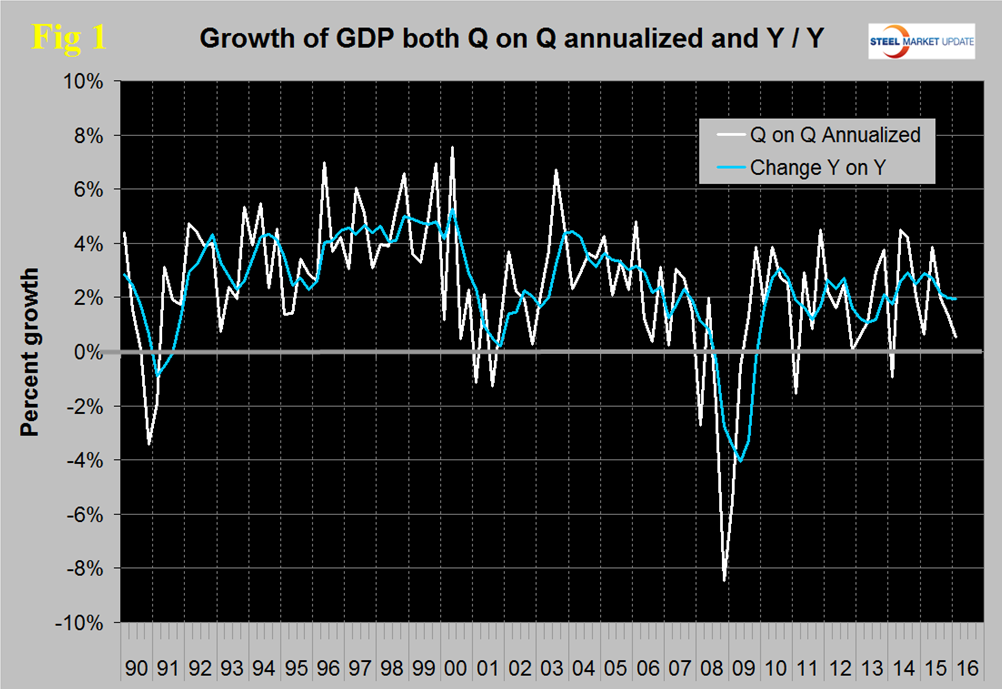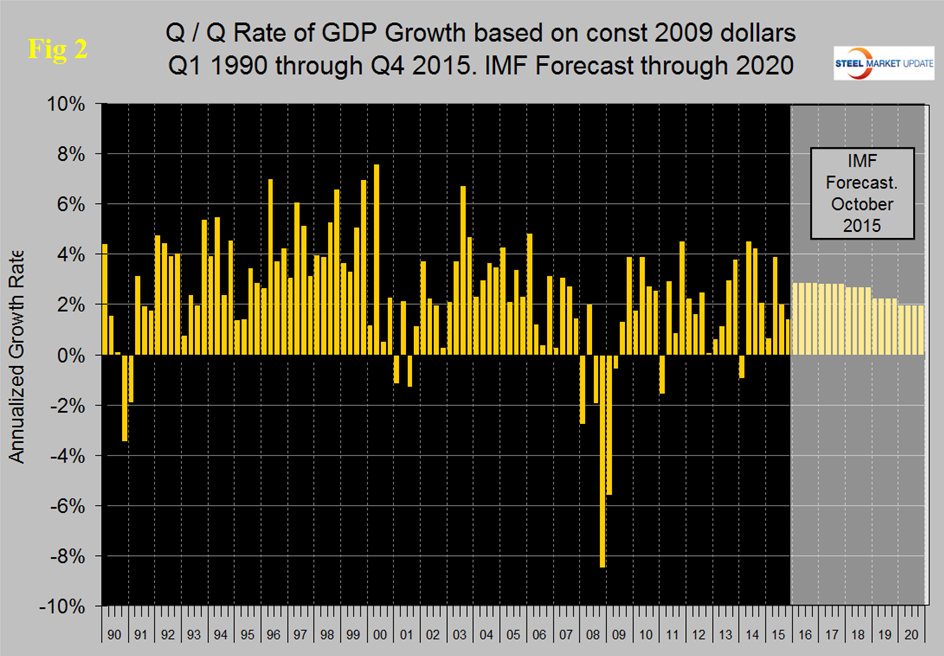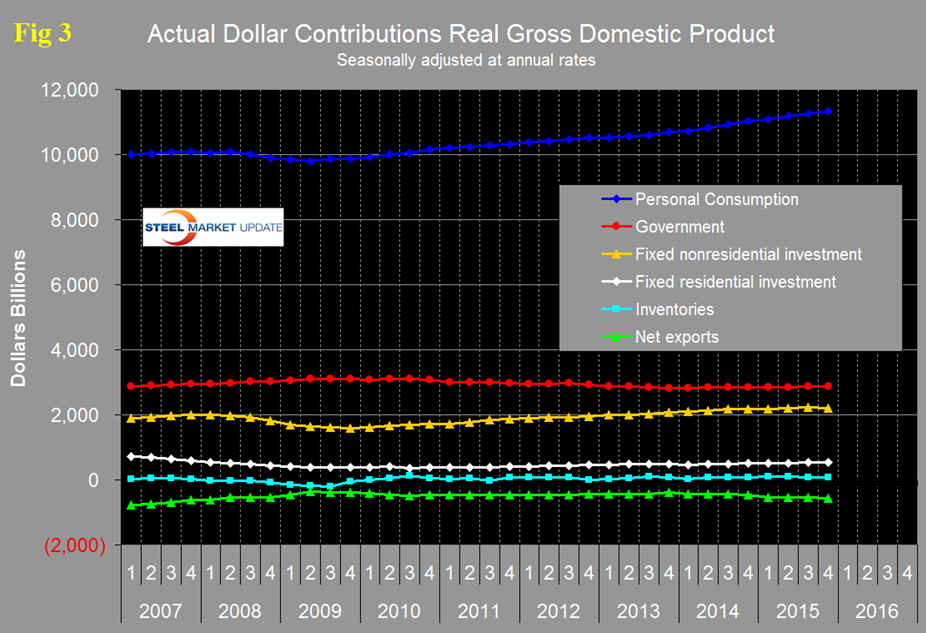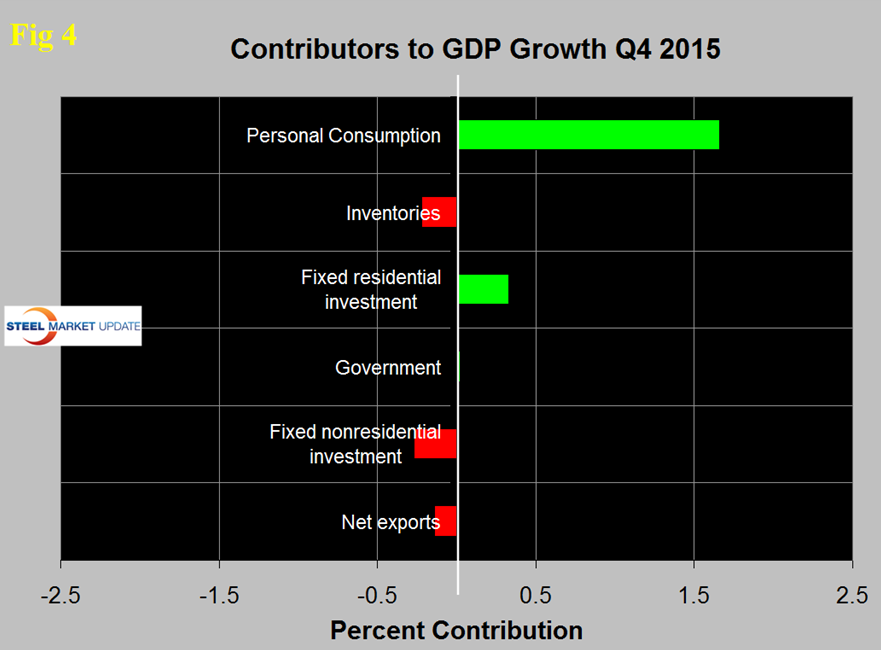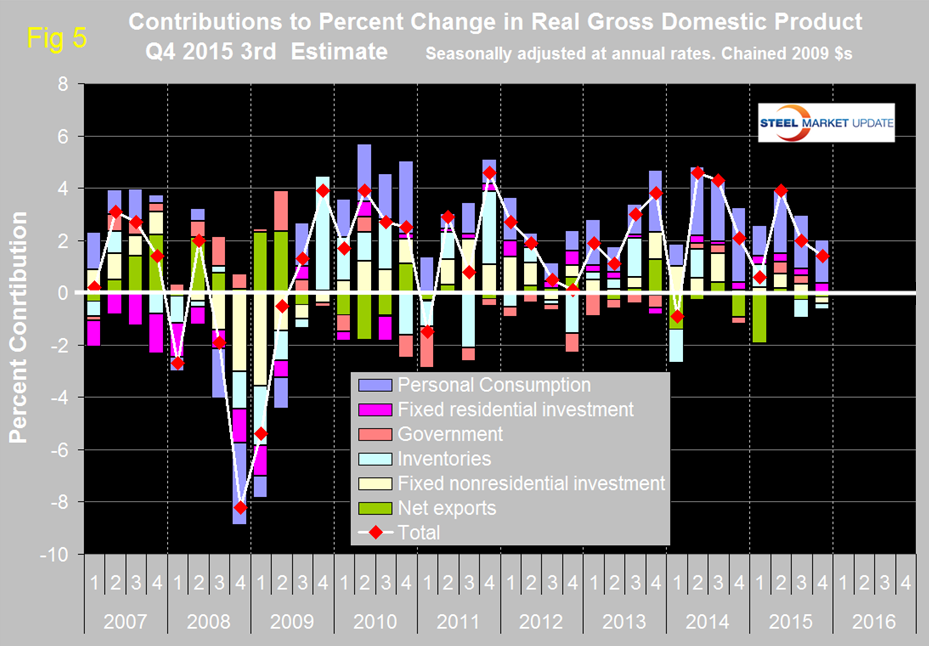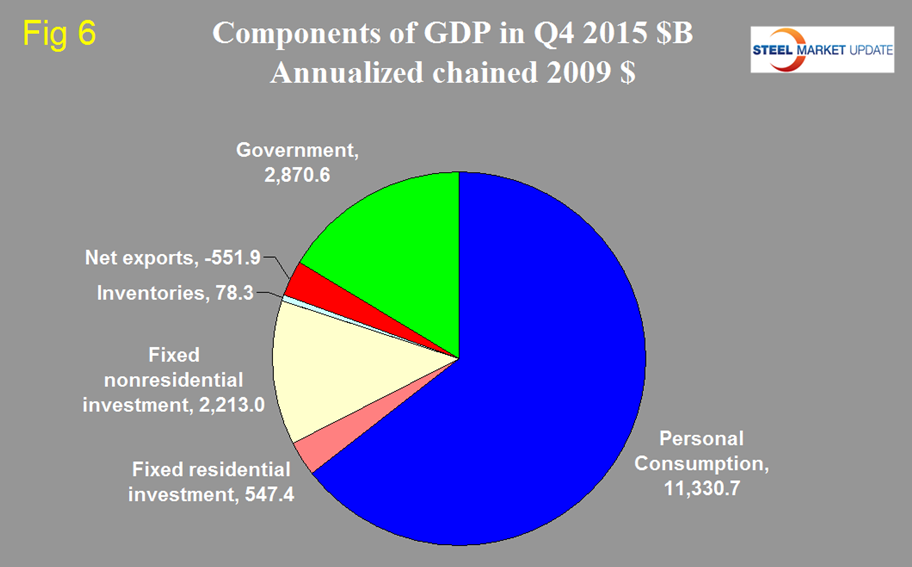Economy

Gross Domestic Product Q1 2016 First Estimate
Written by Peter Wright
May 9, 2016
The annualized GDP growth rate in the first estimate of the first quarter of 2016 was 0.54 percent, down from 1.38 percent, in the fourth quarter of 2015. Normally there are two revisions of the first estimate and sometimes three.
![]()
Revisions to the four quarters of 2015 were +0.4 percent, +1.59 percent, +0.5 percent and +0.69 percent respectively. GDP is measured and reported in chained 2009 dollars and in the first estimate of Q1 was $16.493 trillion. The growth calculation is misleading because it takes the quarter over quarter change and multiplies by 4 to get an annualized rate. This makes the high quarters higher and the low quarters lower. Figure 1 clearly shows this effect.
The blue line is the trailing 12 months growth and the white line is the headline quarterly result. On a trailing 12 month basis, GDP was 1.95 percent higher in the first quarter of 2016 than it was in Q1 2015. In the last five years, since Q1 2011 the trailing 12 month growth of GDP has ranged from a high of 2.88 percent to a low of 1.07 percent therefore the latest result is central within this variability.
Figure 2 shows the headline quarterly results since 1990 and the latest IMF forecast through 2020.
In their April revision, the IMF downgraded their forecast of US growth in 2016 from their October estimate of 2.84 percent to 2.4 percent and downgraded 2017 from 2.80 percent to 2.50 percent.
Historically it has been necessary to have about a 2.5 percent growth in GDP to get any growth in steel demand so this latest estimate of GDP doesn’t suggest any significant change in steel demand in the immediate future. This relationship is a long term average and in reality steel is extremely more volatile than GDP. If GDP takes a dive then steel demand craters and if GDP takes a sudden upturn steel soars. Neither of these extremes is evident at present.
There are six major subcomponents of the GDP calculation and the magnitude of these is shown in Figure 3.
Personal consumption accounted for 69.02 percent of the total in the latest data. Figure 4 shows the change in the major subcomponents of GDP in Q1 2016 and the dominance of personal consumption as a growth driver.
The change in fixed nonresidential investment was the greatest detractor, this includes nonresidential buildings and infrastructure which in the Commerce Department’s CPIP construction report did well in the first Q. The BEA data for GDP is seasonally adjusted and in our CPIP analysis we have a choice to examine either seasonally adjusted or non-adjusted data. We choose to consider only non-seasonally adjusted data therefore we have introduced a discrepancy in government data from different departments. Declining inventories have a negative effect on the overall GDP calculation and this was the case in the first Q. Over the long run inventory changes are a wash and simply move growth from one period to another. Net exports also reduced the overall result by 0.34 percent. The effect of net exports has been very erratic. In Q1 2015 they contributed negative 1.92 percent and in Q2 2015 positive 0.18 percent. Figure 5 shows the same data as Figure 4 extended back through Q1 2007 and describes the quarterly change in the six major subcomponents of GDP.
Prior to the latest three quarters of data, the last time that inventories made a major negative contribution was Q1 2014. The contribution of personal consumption at 1.27 percent was down from 1.66 percent in the fourth quarter. Personal consumption includes goods and services, the goods portion of which includes both durable and non-durables. Government expenditures contributed 0.2 percent to growth in Q1 up from 0.02 percent in Q4. The contribution of fixed residential investment at 0.49 percent in Q1 was up from 0.33 percent in Q4 and has been fairly consistent and positive for the last eight quarters. The contribution of fixed nonresidential investment has been more variable and has declined in each of the last three quarters. Inventories which had contributed negative 0.22 percent in Q4 contributed negative 0.33 percent in Q1. Figure 6 shows the breakdown of the $16 trillion economy.
SMU Comment: First quarter data of GDP from the BEA has been notorious in recent years for the inaccuracy of seasonal adjustment. There have been attempts to remedy this and last year the upward revision was only 0.4 percent. Nevertheless we can expect this latest data to be revised upwards in the next two months. We have observed frequently in our SMU reports that steel demand has not been where it should be based on several previously indicative benchmark indicators and that a decline in inventories throughout the supply chain was likely a major contributing factor. This GDP data would seem to be supportive of that view as an inventory reduction has detracted from GDP since H1 2015.

Peter Wright
Read more from Peter WrightLatest in Economy

Architecture billings continue to slide in March
Architecture firms said billings continued to decline in March, according to the latest Architecture Billings Index (ABI) released by the American Institute of Architects (AIA) and Deltek.

Beige Book shows concerns about trade policy
Manufacturing was mixed, but two-thirds of districts said activity was little changed or had declined.

New York state manufacturing index drops again in April
Firms were pessimistic, with the future general business conditions index falling to its second lowest reading in the more than 20-year history of the survey

Construction adds 13,000 jobs in March
The construction sector added 13,000 jobs, seasonally adjusted, in March, but tariffs could undermine the industry.

Supply chains, end-users brace for impact from tariffs
Supply chains are working through what the tariffs mean for them

